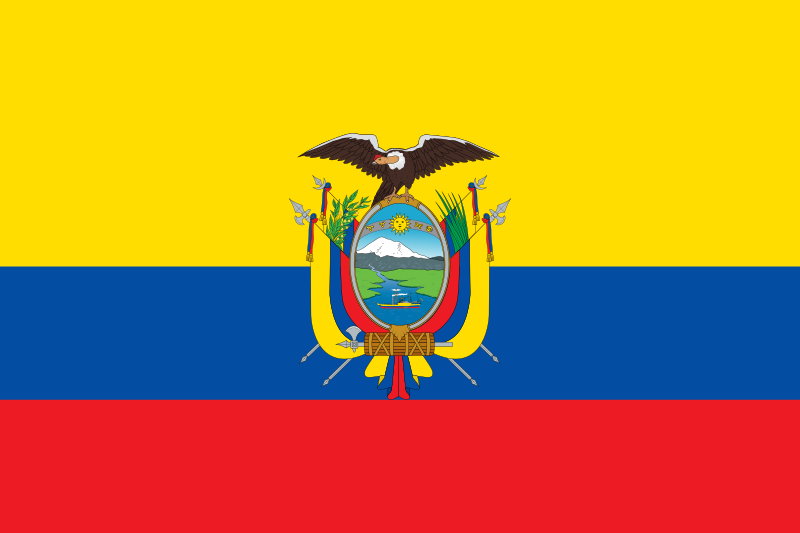 2 weeks before I set out on my journey to Ecuador, I am trying to become technologically savvy enough to figure out blogging. So far, so good. Here is a map of Ecuador. Ecuador is located on the Northwestern coast of South America. Columbia is located to the North, Peru to the East and South and the Pacific Ocean to the West. The capital of Ecuador is Quito and is located in the Guayllabamba river basin with an estimated population of about 1.5 million. It is the second most populous city in Ecuador after Guayaquil and the 2nd highest capital in the world at 9,200 ft (2,800 meters) with the highest capital being La Paz in Bolivia.
2 weeks before I set out on my journey to Ecuador, I am trying to become technologically savvy enough to figure out blogging. So far, so good. Here is a map of Ecuador. Ecuador is located on the Northwestern coast of South America. Columbia is located to the North, Peru to the East and South and the Pacific Ocean to the West. The capital of Ecuador is Quito and is located in the Guayllabamba river basin with an estimated population of about 1.5 million. It is the second most populous city in Ecuador after Guayaquil and the 2nd highest capital in the world at 9,200 ft (2,800 meters) with the highest capital being La Paz in Bolivia. Here is a picture from the internet of Quito. Looks pretty cool with the volcano Pichincha in the background (apparently, Quito is the only capital in the world that is directly adjacent to an active volcano). The latest eruption from this volcano was in 2006 when some smoke and a lot of ash were deposited all over the city.
Because of its elevation and proximity to the equator, the climate is pretty much the same all year round with highs of about 65 degrees and lows of about 50.
 | |
| The Flag of Ecuador |
Short Historical and Political Time Line: There is evidence of human cultures as early as 3500 BC in Ecuador. Woah, that's a long time ago. Ecuador became a part of the Inca empire in 1463. The Spanish arrived in 1532 with plans of conquering the Incas. Like all indigenous people of the new world, they were devastated by smallpox, measles and other diseases brought from the old world. After 300 years of Spanish rule, Quayaquil became the first city to gain independence from Spain in 1820 and then the whole country became independent in 1822 joining together with Venezuela and Columbia and then becoming its own country in 1830. The 19th century in Ecuador was very politically unstable and there were a succession of rulers. The political volatility centered around the struggle between the conservative, church-backed parties and liberal parties. The 70's were a time of continued instability as Ecuador went from the biggest exporter of bananas to an oil exporter. There were two coup d'etats in the 1970's and then in the 80's oil prices fell and there was an earthquake that devastated 40 km of oil pipe lines. Ecuador started to return to democracy in 1979 when president Jaime Roldos Aguilera was elected and in his short time in power he enacted many laws that protected basic human rights. He was killed in a plane crash just 2 years after being elected and conspiracy theorists point fingers to American constituents with interests in Ecuadorian oil. In 1996 Abdala Bucaram called 'El Loco' was elected but fled to Panama after a few months in power because of his unpopularity. This left the vice president in charge, Ecuador's first female president, in power for a whole 2 days at which time the Congress voted to replace her with a man. In 2000, the local Ecuadorian currency, the sucre, was replaced by the American dollar because of the huge depreciation of the sucre. Rafael Correa Delgado is the current president of Ecuador. He describes himself as a humanist, a fervent Catholic of the left and a proponent of 21st-century socialism. Since his election he has focused on social welfare and has attacked the oil industry, trying to get them to pay more taxes and meet the current environmental regulations. Some people compare him to Venezuela's Hugo Chavez.
Well, this turned into a not-so-brief time line. And I just grazed the surface. There is so much more to talk about. But at least this gives us a nice introduction to the political environment of Ecuador. I hope you will continue to discover Ecuador and Quito with me as I share my experiences in the country!

I love this, Christine, and am looking forward to following your blog.
ReplyDeleteGreat first entry! I've already learned more about Ecuador than I ever thought possible :) Especially interesting to learn that they use the American dollar! I look forward to following.
ReplyDeletenice job Stine. I found this article for you;
ReplyDeletehttp://www.sfgate.com/cgi-bin/article.cgi?f=/c/a/2011/03/06/CMCF1HHPN0.DTL
I really want to go here one day.
Thanks for sharing. I canʻt wait to hear about your adventures. We celebrated Mardi Gras at home tonight - Tom, the girls & Becca. Laissez les bons temps rouler!
ReplyDeleteWow!! Stines you've really done a lot so far and you haven't been gone that long!!
ReplyDeleteWhoops! I accidentally signed in as audrey. I just wrote that last one. But yes you have done a lot so far!!
ReplyDelete